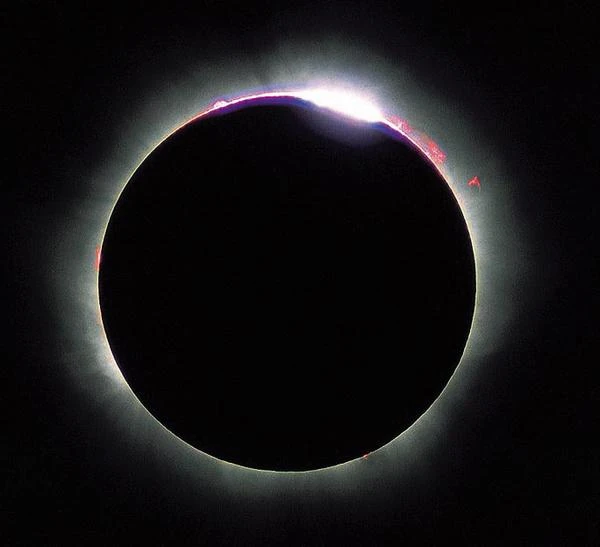
Baily's Beads are visible during an annular eclipse of the Sun by the Moon, and it is at this moment that one can observe the Baily's Beads.
This phenomenon is due to the topography of the Moon's surface (mountains, craters, valleys, etc.). It was brilliantly described by the English astronomer Francis Baily (1774-1844) in 1836.
The "scratches" of the Moon by the Sun's light during a solar eclipse allow the Sun's beads of light to shine in some places and disappear in others. Since the irregularities of the lunar profile are perfectly known, astronomers can calculate in advance the appearance of the beads on the eclipse circle.
Baily's Beads appear briefly for a few seconds along the path of light near the edges, and their duration is about 1 to 2 minutes. At this moment, a Red Flash appears just after the sighting of Baily's Beads. This very brief passage has the effect of coloring the solar corona a vivid pink. The red color is due to the alpha line of hydrogen, which radiates at this wavelength.
The Diamond Ring or Diamond of Airy is the last portion of the Sun outlined behind the black disk of the Moon. The name of this figure comes from George Biddell Airy (1801-1892), an English scientist who discovered and described the phenomenon in 1835.
The Diamond Ring resembles a ring adorned with a diamond shining with a thousand lights. It occurs just before or just after the total eclipse.
N.B.:
Sir George Biddell Airy (1801-1892) was a British mathematician, astronomer, geodesist, and physicist. He became Astronomer Royal in 1835 and was the author of several theories (theory of rainbows, theory of isostasy), becoming a member of the Royal Society on January 21, 1836.
The total solar eclipse hidden by the Moon is always a spectacular event, a rare phenomenon that lasts a little over six minutes. The longest of the century, on July 22, 2009, lasted 6 minutes and 39 seconds.
During a total solar eclipse, the landscape plunges into darkness, the temperature drops abruptly, nature becomes silent, insects and birds fall silent, and people marvel, shouting a big WOW!
During the total solar eclipse, the last rays of the Sun that manage to pass through the gaps in the rugged relief of the Moon produce a magnificent red flash and a diamond ring. As soon as the last ray of the Sun disappears behind the lunar mountains, a glint called the "Diamond of Airy" emerges. When the Sun is completely hidden, one can then see its delicate corona around the lunar circle. Sometimes, a solar ejection can be seen on the limb of the Sun.